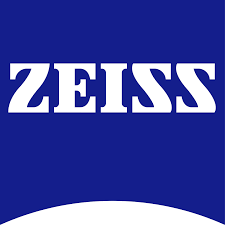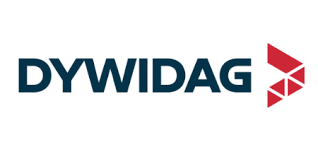Ai In Smart Cities
Published Date: 02 June 2025 | Report Code: ai-in-smart-cities
Ai In Smart Cities Market Size, Share, Industry Trends and Forecast to 2033
This report offers a comprehensive insight into the evolving landscape of AI in Smart Cities. It details market trends, technological innovations, segmentation, and regional performance while exploring key growth drivers in urban development. With data-driven analysis and forecasts covering 2024 through 2033, the report provides vital information for strategic planning and informed decision-making.
| Metric | Value |
|---|---|
| Study Period | 2024 - 2033 |
| 2024 Market Size | $1.80 Billion |
| CAGR (2024-2033) | 7.8% |
| 2033 Market Size | $3.61 Billion |
| Top Companies | Tech Smart Solutions, Urban AI Innovations, NextGen City Technologies |
| Last Modified Date | 02 June 2025 |
Ai In Smart Cities (2024 - 2033)
Ai In Smart Cities Market Overview
Customize Ai In Smart Cities market research report
- ✔ Get in-depth analysis of Ai In Smart Cities market size, growth, and forecasts.
- ✔ Understand Ai In Smart Cities's regional dynamics and industry-specific trends.
- ✔ Identify potential applications, end-user demand, and growth segments in Ai In Smart Cities
What is the Market Size & CAGR of Ai In Smart Cities market in 2024?
Ai In Smart Cities Industry Analysis
Ai In Smart Cities Market Segmentation and Scope
Tell us your focus area and get a customized research report.
Ai In Smart Cities Market Analysis Report by Region
Europe Ai In Smart Cities:
Europe exhibits steady growth with an emphasis on sustainability and innovation. Market estimates indicate an increase from 0.48 in 2024 to 0.96 by 2033, as smart city projects integrate renewable energy, security, and data analytics.Asia Pacific Ai In Smart Cities:
Asia Pacific presents significant growth potential with its increasing urbanization and rapid technology adoption. Market values are projected to rise from 0.35 in 2024 to 0.70 by 2033, driven by expanding smart city initiatives and supportive government policies.North America Ai In Smart Cities:
North America remains a mature market with strong technology infrastructure and early adoption of smart solutions. The market is forecast to grow from 0.68 in 2024 to 1.37 by 2033, supported by extensive investments in AI-driven urban projects.South America Ai In Smart Cities:
South America, though relatively smaller in market size at 0.08 in 2024, is poised for growth as cities invest in digital transformation. Strategic initiatives and infrastructure upgrades are expected to boost regional market performance by 2033.Middle East & Africa Ai In Smart Cities:
In the Middle East and Africa, market expansion is driven by initiatives to modernize urban infrastructure. The region is expected to double its market size from 0.21 in 2024 to 0.42 by 2033, reflecting keen interest in advanced AI applications.Tell us your focus area and get a customized research report.
Ai In Smart Cities Market Analysis By Technology
Global AI in Smart Cities, By Technology Market Analysis (2024 - 2033)
The technology segment encompasses machine learning, computer vision, IoT integration, and interoperability. Machine learning and computer vision carry 68.76% share each, while IoT integration and interoperability share around 5.87% each. This segment is crucial for automated decision-making and real-time processing in urban management. Its growth not only supports enhanced analytics but also improves citizen services, making it a key driver for market expansion.
Ai In Smart Cities Market Analysis By Application
Global AI in Smart Cities, By Application Market Analysis (2024 - 2033)
The application segment in smart cities includes transportation, public safety, energy management, and waste management. Transportation services, carrying 22.55% share, and public safety are integral to daily city operations. Energy and waste management contribute significantly to sustainability goals. With market shares remaining consistent over the forecast period, this segment underscores the importance of AI in optimizing city operations and ensuring a safe, efficient urban environment.
Ai In Smart Cities Market Analysis By Dataset
Global AI in Smart Cities, By Dataset Market Analysis (2024 - 2033)
Dataset segmentation differentiates between structured and unstructured data. Structured data dominates with a significant 85.12% share, while unstructured data maintains 14.88%. This split emphasizes the reliability and ease of integration of structured data in analytical processes, although the growth of unstructured data poses new challenges and opportunities for deeper insights, thus influencing the overall precision and efficiency of AI applications in smart cities.
Ai In Smart Cities Market Analysis By End User
Global AI in Smart Cities, By End-User Market Analysis (2024 - 2033)
Key end-users include government agencies and citizens. Governments hold a substantial share of 56.27% due to their active role in implementing smart infrastructure projects. Citizens, representing 10.61%, are becoming increasingly involved as consumers of smart services. This segmentation reflects the dual approach in market strategy where policy-driven initiatives align with grassroots adoption, ensuring that AI solutions are designed to meet diverse needs throughout urban ecosystems.
Ai In Smart Cities Market Analysis By Challenges
Global AI in Smart Cities, By Challenges Market Analysis (2024 - 2033)
The challenges segment addresses issues such as data privacy and interoperability. With data privacy commanding a 68.76% share and interoperability at 5.87%, these challenges underscore the need for robust security frameworks and standardization protocols. Addressing these concerns is vital for sustaining trust and promoting widespread adoption of AI technologies, which are essential for the resilient and long-term growth of smart city projects.
Ai In Smart Cities Market Trends and Future Forecast
Tell us your focus area and get a customized research report.
Global Market Leaders and Top Companies in Ai In Smart Cities Industry
Tech Smart Solutions:
Tech Smart Solutions is at the forefront of integrating AI with urban planning, offering innovative platforms that enhance traffic management and public safety through intelligent analytics.Urban AI Innovations:
Urban AI Innovations pioneers smart city initiatives by developing cutting-edge machine learning and IoT systems, facilitating seamless data integration and efficient urban management.NextGen City Technologies:
NextGen City Technologies specializes in digital transformation for municipal governance, providing scalable AI solutions that drive sustainable growth and improved quality of life.We're grateful to work with incredible clients.









FAQs
What is the market size of AI in smart cities?
The AI in Smart Cities market is projected to reach $1.8 billion in 2024, with a robust compound annual growth rate (CAGR) of 7.8% anticipated through 2033, reflecting growing investment in intelligent urban solutions.
What are the key market players or companies in the AI in smart cities industry?
Key players in the AI in smart cities industry include major technology firms, software developers, and urban planning consultants, focusing on innovations in infrastructure, transportation, utilities, and data management solutions.
What are the primary factors driving the growth in the AI in smart cities industry?
Growth in the AI in smart cities industry is driven by rising urbanization, advancements in IoT technology, government initiatives for smart urban development, and an increasing demand for effective urban management solutions.
Which region is the fastest Growing in the AI in smart cities market?
North America is the fastest-growing region in the AI in smart cities market, projected to expand from $0.68 billion in 2024 to $1.37 billion by 2033, showcasing significant technological investments and urban ecosystem developments.
Does ConsaInsights provide customized market report data for the AI in smart cities industry?
Yes, ConsaInsights offers customized market report data tailored to specific client needs, providing detailed insights into market size, growth trends, and competitive analysis in the AI in smart cities realm.
What deliverables can I expect from this AI in smart cities market research project?
Deliverables from the AI in smart cities market research project include comprehensive reports, regional insights, segment analysis, market forecasts, competitive landscape data, and actionable recommendations for stakeholders.
What are the market trends of AI in smart cities?
Key market trends in AI in smart cities include increased investment in infrastructure projects, growing emphasis on data privacy, and advancements in machine learning and computer vision technologies to enhance urban management.
